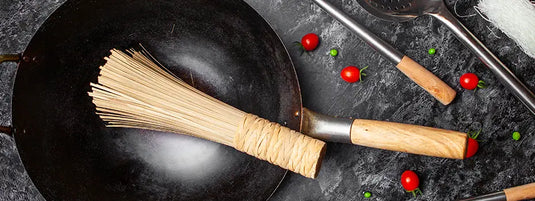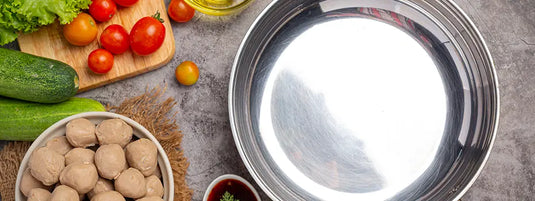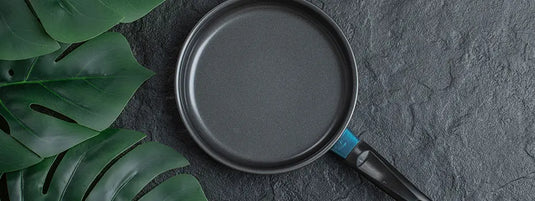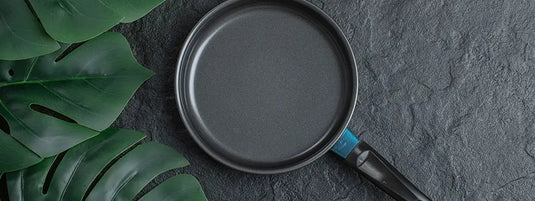Updated: · Kichera Editorial Team · Kichera
Reviewed by: Materials & Culinary Testing at Kichera
Quick Answer
To make cast iron naturally non-stick, we “season” it — applying thin oil layers and heating them until they polymerize into a hard, slick surface. This builds a safe, PTFE-free coating that improves with every use.
- Step 1: Clean & dry the pan completely
- Step 2: Apply a very thin coat of oil (flaxseed, rice bran, or sesame)
- Step 3: Bake or heat until the surface darkens and hardens
- Step 4: Repeat 3–5 cycles for a lasting base layer
Shop Kichera Cast Iron Cookware — pre-seasoned, PTFE-free, and ready for daily use.
Why Seasoning Matters for Cast Iron
Raw cast iron is porous. When we apply heat and oil, a chemical reaction (polymerization) transforms oil molecules into a plastic-like film that bonds to the metal surface. This layer prevents rust, adds natural non-stick ability, and protects our food from metallic taste or sticking.
Unlike synthetic coatings, this natural film strengthens over time and never peels or flakes.
Step-by-Step: How to Season a Cast Iron Pan
- Wash thoroughly: Use mild soap once if new. Rinse and dry fully (moisture causes rust).
- Apply oil: Pour a few drops of high smoke-point oil (rice bran, groundnut, flaxseed, or sesame) and spread evenly with a cloth.
- Wipe excess: The layer should be paper-thin — thick oil leaves sticky patches.
- Heat the pan: Place upside down in an oven at 200–230 °C (or on stovetop flame) for 1 hour.
- Cool slowly: Let it rest as the film hardens; repeat 3–5 times for best results.
- Daily use: After cooking, wipe clean and apply a drop of oil to maintain the layer.
Tip: The more we cook with oil, the better the seasoning becomes — true “non-stick” without Teflon.
Best Oils for Seasoning (High Smoke Point)
- Flaxseed Oil (polymerizes well, creates hard surface)
- Rice Bran Oil (stable and affordable)
- Mustard or Groundnut Oil (traditional Indian choices)
- Ghee (for mild seasoning layers after cooking)
See our Safe Pan Temperatures & Oil Smoke Points guide for correct heat levels.
Maintaining a Seasoned Pan
- Never soak cast iron — just wash, dry, and oil.
- If food sticks, scrub gently with salt paste or chainmail cleaner.
- Rust spots? Scrub them off, re-season, and the surface restores fully.
- Store with a paper towel inside to absorb humidity.
Cast Iron Cookware Ideal for Seasoning
- Everyday frying: Kichera Cast Iron Fry Pan
- Dosa & Roti: Pre-Seasoned Cast Iron Dosa Tawa
- Deep curries & gravies: Kichera Cast Iron Kadai
FAQs
Why should we season cast iron?
Seasoning prevents rust, makes the pan naturally non-stick, and builds a food-safe coating that improves with use.
Can we use soap on seasoned pans?
Occasional mild soap is fine; just dry immediately and reapply a thin oil coat to maintain protection.
What if our pan gets rusty?
Scrub the rust off, rinse, dry, and re-season 2–3 cycles. The pan will return to non-stick form easily.
Is cast iron good for health?
Yes — trace iron transfer is normal and beneficial. It’s chemical-free, durable, and one of the safest cookware materials.
Explore our full cookware health series: Cast Iron vs Carbon Steel · 304 vs 316 Triply Stainless · Solid Ceramic vs Ceramic-Coated · Safe Pan Temperatures & Oil Smoke Points




